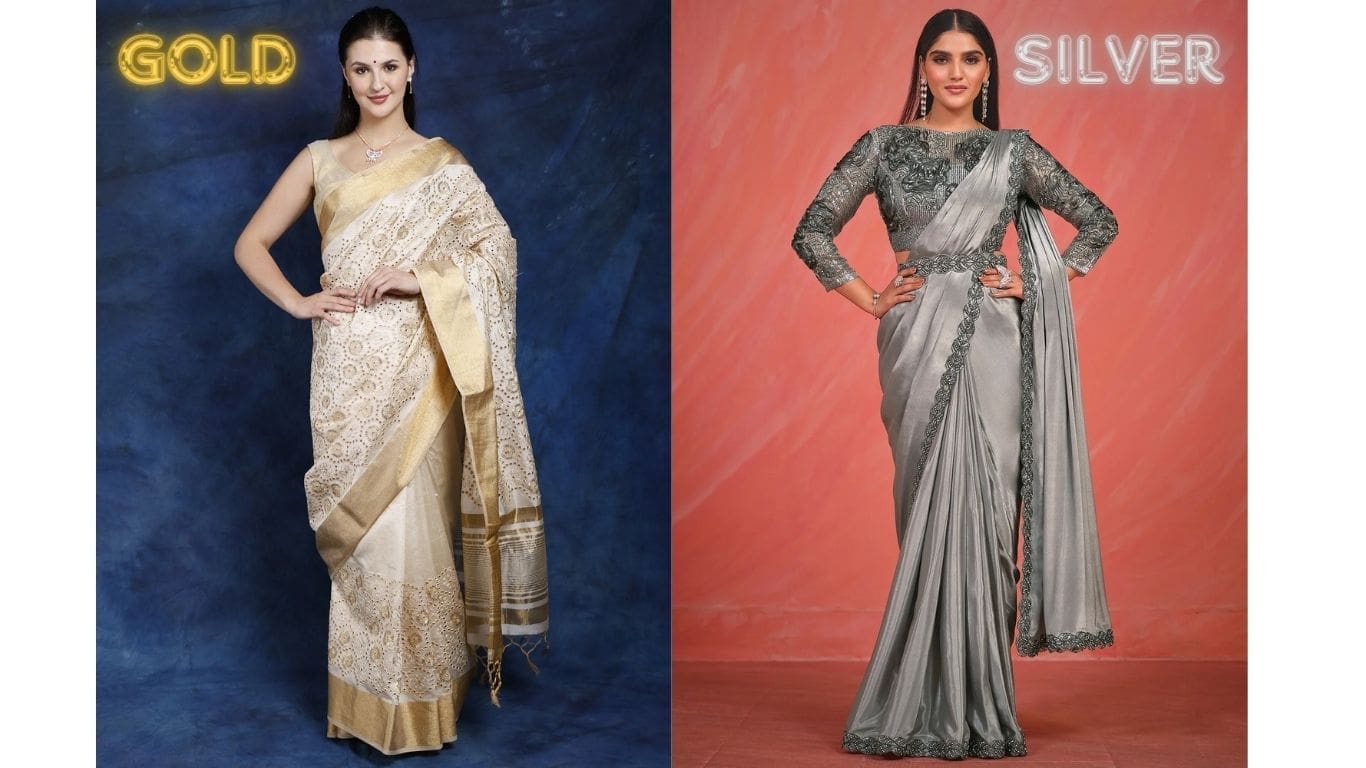Gold and silver embroidery has a rich history dating back to the 15th century in India. The origins of this intricate art form are unclear, but it has been extensively practiced across the world. In the early Middle Ages in Europe, the work was similar to that of a goldsmith, with the embroidered surface often hammered flat. From the 12th century onwards, silk thread was used along with gilt to highlight details such as the flesh of figures.
The Mughals used gold to fill the background with laid threads, while the main motifs were executed in colored silks. During the decline of the empire, the skilled workmen moved to various states that offered patronage, adapting their skills to meet the demands of their new patrons and modifying designs to accommodate rising labor and material costs.
The love of beauty combined with a desire for display of wealth led to an enormous range of products, from sumptuous throne seats and elephant trappings to gossamer light fabrics scintillating with thousands of tiny gold dots. The technique of gold embroidery on velvet was introduced into India by the Portuguese, and the work is known as Zardozi. This formal embroidery is done by laying gold threads over a foundation padding of cotton threads, often featuring geometric, floral, and animal patterns that can appear together on the same piece.
The pieces produced are heavy due to the combined weight of the base fabric, metal wire, and padding, making them suitable for heavy items such as saddle cloths, umbrellas, canopies, seat covers, carpets, and bolsters. In contrast, lighter fabrics are known as Kalabattu or Karchob, where the gilt wire or spangles are stitched directly to the fabric or used as embroidery thread to create tiny dots, flowers, or stars on light silk, cotton, or chiffon.
Designs are made on paper, with the edges perforated by small pins or needles to form a stencil. White or colored chalk is then applied to a cloth dauber and lightly rubbed over the perforations to transfer the design to the material. The embroidery threads are made by melting metal ingots and beating them into bars known as pasa. For gold thread, a piece of silver is gilded at least three times with pure gold, and the wire is then drawn through successive holes in a steel plate until it becomes as fine as a hair.
The work is done by skilled artisans known as Kalabattunakad, who strike the wire rapidly with a highly polished steel hammer to flatten it. The wire can be wound around silk thread or used flat, depending on the design requirements. Salma is a fine, soft wire wound spirally without a thread in the center, used for making flowers and leaves that are attached by tiny stitches to the base material. For Zardozi work, the wire is thicker and the spirals are stiffer.
Small spangles called sitara (star) are used for the center of flowers, and piled together they can create a whole design. These spangles are named after their ability to reflect light and create the play of light and shade that mirrors or pieces of mica do in other embroideries. Tiny bowls called katoris are also used, with a perforation through the center, similar to sitaras.
Flat wire is used for the work known as Kamdani, where the needle is threaded with ordinary thread doubled and secured with a knot. The wire is pressed down at every stitch to produce small dots or sprays of flowers and leaves. The effect is rich but light and dainty, with a shimmering effect created by the hazara buti, which produces a thousand dots from roughly 1/80 kg of wire.
Borders of various kinds are made as edging for sarees, dupattas, and other garments or as an adjunct to other embroidery. The katao-ki-bel is a 9-yard-long edging for sarees made of stiff canvas covered with wire and spangles. The redundant canvas is cut away, leaving a scalloped or plain edge and holes in the design, producing a lacy effect.
A variation is to make the base material with strips or tiny squares of different colored fabrics and to do the embroidery in wire. Designs cut out from plain gold and silver woven borders are craftily used to enhance the effect. Narrow gold woven borders are converted into chutki by being sharply pressed between the two thumbs and nails, creating a spiked appearance.
A wide range of liturgical vestments are produced in Kerala, including robes, stoles, surplices, and cloaks, heavily embroidered and used during services in churches. Christianity came to Kerala early and took firm roots there, leading to the flourishing of embroideries connected with the religion.
The design is outlined with gold cord secured on the base material with tiny stitches. The inside of the design is filled in with spangles, and silk thread is used over a padding of various degrees of thickness to produce a three-dimensional effect. The colors in the vestments are fixed, with white symbolizing purity and light, green representing hope, and rose symbolizing joy.
Gold and silver embroidery uses most of the stitches in other forms of the craft, including satin, chain, stem, and running stitches. The most important stitch is the couching or laid stitch. Delhi, Bhopal, Lucknow, Agra, Banaras, Hyderabad, Surat, Bombay, Aurangabad, Jaipur, and Murshidabad are all important centers of gold and silver embroidery, with men doing most of the work, although women do Kamdani work, particularly in Lucknow

